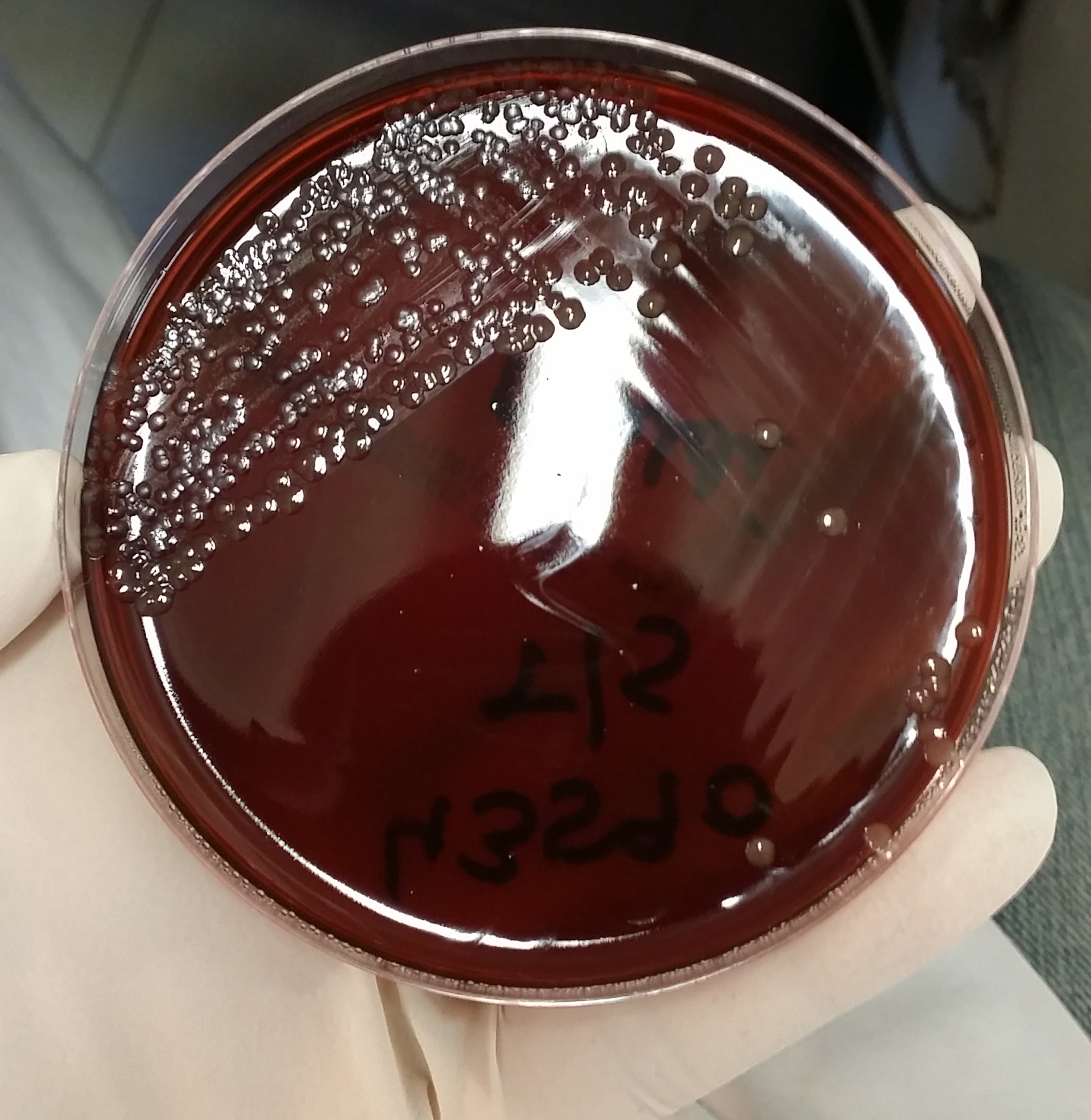|
Meningococcus
''Neisseria meningitidis'', often referred to as the meningococcus, is a Gram-negative bacterium that can cause meningitis and other forms of meningococcal disease such as meningococcemia, a life-threatening sepsis. The bacterium is referred to as a coccus because it is round, and more specifically a diplococcus because of its tendency to form pairs. About 10% of adults are carriers of the bacteria in their nasopharynx. As an exclusively human pathogen, it causes developmental impairment and death in about 10% of cases. It causes the only form of bacterial meningitis known to occur epidemically, mainly in Africa and Asia. It occurs worldwide in both epidemic and endemic form. ''N. meningitidis'' is spread through saliva and respiratory secretions during coughing, sneezing, kissing, chewing on toys and through sharing a source of fresh water. It has also been reported to be Sexually transmitted infection, transmitted through oral sex and cause urethritis in men. It infects its hos ... [...More Info...] [...Related Items...] OR: [Wikipedia] [Google] [Baidu] |
Meningitis
Meningitis is acute or chronic inflammation of the protective membranes covering the brain and spinal cord, collectively called the meninges. The most common symptoms are fever, intense headache, vomiting and neck stiffness and occasionally photophobia. Other symptoms include confusion or altered consciousness, nausea, and an inability to tolerate loud noises. Young children often exhibit only nonspecific symptoms, such as irritability, drowsiness, or poor feeding. A non-blanching rash (a rash that does not fade when a glass is rolled over it) may also be present. The inflammation may be caused by infection with viruses, bacteria, fungi or parasites. Non-infectious causes include malignancy (cancer), subarachnoid hemorrhage, chronic inflammatory disease ( sarcoidosis) and certain drugs. Meningitis can be life-threatening because of the inflammation's proximity to the brain and spinal cord; therefore, the condition is classified as a medical emergency. A lumba ... [...More Info...] [...Related Items...] OR: [Wikipedia] [Google] [Baidu] |
Waterhouse–Friderichsen Syndrome
Waterhouse–Friderichsen syndrome (WFS) is defined as adrenal gland failure due to hemorrhages in the adrenal glands, commonly caused by sepsis. Typically, the bacteria responsible for triggering the bleeding is '' Neisseria meningitidis''. The bacterial infection leads to massive bleeding into one or both adrenal glands. Bilateral adrenal gland hemorrhaging is more common. It is characterized by overwhelming bacterial infection meningococcemia leading to massive blood invasion, organ failure, coma, low blood pressure and shock, disseminated intravascular coagulation (DIC) with widespread purpura, rapidly developing adrenocortical insufficiency and death. Signs and symptoms Waterhouse–Friderichsen syndrome can be caused by a number of different organisms (see below). When caused by ''Neisseria meningitidis'', WFS is considered the most severe form of meningococcal sepsis. The onset of the illness is nonspecific with fever, rigors, vomiting, and headache. Soon a rash appea ... [...More Info...] [...Related Items...] OR: [Wikipedia] [Google] [Baidu] |
Meningococcal Disease
Meningococcal disease is a serious infection caused by ''Neisseria meningitidis'', also known as meningococcus, a gram negative diplococcus. Meningococcal disease includes meningitis, meningococcal septicemia, or a combination of both, which can be life-threatening and rapidly progressive. If left untreated, the disease has a high mortality rate; however, it is preventable through vaccination. Meningitis and meningococcal sepsis are major causes of illness, death, and disability in both Developed countries, developed and Underdeveloped countries, under-developed countries. Meningococcal disease can be transmitted to others through saliva, close contact with an infected individual by inhaling respiratory air droplets. Initial symptoms may be subtle and similar to other bacterial infection, but can quickly progress to include fever, rash, body aches, photophobia and other complications. ''Neisseria meningitidis'' colonizes a substantial proportion of the general population withou ... [...More Info...] [...Related Items...] OR: [Wikipedia] [Google] [Baidu] |
Pilus
A pilus (Latin for 'hair'; : pili) is a hair-like cell-surface appendage found on many bacteria and archaea. The terms ''pilus'' and '' fimbria'' (Latin for 'fringe'; plural: ''fimbriae'') can be used interchangeably, although some researchers reserve the term ''pilus'' for the appendage required for bacterial conjugation. All conjugative pili are primarily composed of pilin – fibrous proteins, which are oligomeric. Dozens of these structures can exist on the bacterial and archaeal surface. Some bacteria, viruses or bacteriophages attach to receptors on pili at the start of their reproductive cycle. Pili are antigenic. They are also fragile and constantly replaced, sometimes with pili of different composition, resulting in altered antigenicity. Specific host responses to old pili structures are not effective on the new structure. Recombination between genes of some (but not all) pili code for variable (V) and constant (C) regions of the pili (similar to immunoglobulin ... [...More Info...] [...Related Items...] OR: [Wikipedia] [Google] [Baidu] |
Disseminated Intravascular Coagulation
Disseminated intravascular coagulation (DIC) is a condition in which blood clots form throughout the body, blocking Microvessel, small blood vessels. Symptoms may include chest pain, shortness of breath, leg pain, problems speaking, or problems moving parts of the body. As clotting factors and platelets are used up, bleeding may occur. This may include hematuria, blood in the urine, GI bleed, blood in the stool, or bleeding into the skin. Complications may include organ failure. Relatively common causes include sepsis, surgery, major trauma, cancer, and complications of pregnancy. Less common causes include snake bites, frostbite, and burns. There are two main types: acute (rapid onset) and chronic (slow onset). Diagnosis is typically based on blood tests. Findings may include thrombocytopenia, low platelets, low fibrinogen, high International normalized ratio, INR, or high D-dimer. Treatment is mainly directed towards the underlying condition. Other measures may include givin ... [...More Info...] [...Related Items...] OR: [Wikipedia] [Google] [Baidu] |
Purpuric
Purpura () is a condition of red or purple discolored spots on the skin that do not Blanch (medical), blanch on applying pressure. The spots are caused by bleeding underneath the skin secondary to platelet disorders, vascular disorders, coagulation disorders, or other causes. They measure 3–10 mm, whereas petechiae measure less than 3 mm, and Ecchymosis, ecchymoses greater than 1 cm. Purpura is common with typhus and can be present with meningitis caused by meningococci or Sepsis, septicaemia. In particular, meningococcus (''Neisseria meningitidis''), a Gram-negative diplococcus organism, releases endotoxin when it lysis, lyses. Endotoxin activates the Hageman factor (clotting factor XII), which causes disseminated intravascular coagulation (DIC). The DIC is what appears as a rash on the affected individual. Classification Purpura are a common and nonspecific medical sign; however, the underlying mechanism commonly involves one of: *Platelet, Platelet disor ... [...More Info...] [...Related Items...] OR: [Wikipedia] [Google] [Baidu] |
Medical Emergency
A medical emergency is an acute injury or illness that poses an immediate risk to a person's life or long-term health, sometimes referred to as a situation risking "life or limb". These emergencies may require assistance from another, qualified person, as some of these emergencies, such as cardiovascular (heart), respiratory, and gastrointestinal cannot be dealt with by the victim themselves.AAOS 10th Edition Orange Book Dependent on the severity of the emergency, and the quality of any treatment given, it may require the involvement of multiple levels of care, from first aiders through emergency medical technicians, paramedics, emergency physicians and anesthesiologists. Any response to an emergency medical situation will depend strongly on the situation, the patient involved, and availability of resources to help them. It will also vary depending on whether the emergency occurs whilst in hospital under medical care, or outside medical care (for instance, in the street or alon ... [...More Info...] [...Related Items...] OR: [Wikipedia] [Google] [Baidu] |
Mortality Rate
Mortality rate, or death rate, is a measure of the number of deaths (in general, or due to a specific cause) in a particular Statistical population, population, scaled to the size of that population, per unit of time. Mortality rate is typically expressed in units of deaths per 1,000 individuals per year; thus, a mortality rate of 9.5 (out of 1,000) in a population of 1,000 would mean 9.5 deaths per year in that entire population, or 0.95% out of the total. It is distinct from "morbidity", which is either the prevalence or Incidence (epidemiology), incidence of a disease, and also from the incidence rate (the number of newly appearing cases of the disease per unit of time). An important specific mortality rate measure is the crude death rate, which looks at mortality from all causes in a given time interval for a given population. , for instance, the Central Intelligence Agency, CIA estimates that the crude death rate globally will be 7.7 deaths per 1,000 people in a population p ... [...More Info...] [...Related Items...] OR: [Wikipedia] [Google] [Baidu] |
Non-blanching Rash
A non-blanching rash (NBR) is a skin rash that does not fade when pressed with, and viewed through, a glass. It is a characteristic of both purpuric and petechial rashes. Individual purpura measure 3–10 mm (0.3–1 cm, - in), whereas petechiae measure less than 3 mm. A non-blanching rash can be a symptom of bacterial meningitis Meningitis is acute or chronic inflammation of the protective membranes covering the brain and spinal cord, collectively called the meninges. The most common symptoms are fever, intense headache, vomiting and neck stiffness and occasionall ..., but this is not the exclusive cause. References External links {{Cutaneous-condition-stub} Cutaneous conditions ... [...More Info...] [...Related Items...] OR: [Wikipedia] [Google] [Baidu] |
Scanning Electron Microscope
A scanning electron microscope (SEM) is a type of electron microscope that produces images of a sample by scanning the surface with a focused beam of electrons. The electrons interact with atoms in the sample, producing various signals that contain information about the surface topography and composition. The electron beam is scanned in a raster scan pattern, and the position of the beam is combined with the intensity of the detected signal to produce an image. In the most common SEM mode, secondary electrons emitted by atoms excited by the electron beam are detected using a secondary electron detector ( Everhart–Thornley detector). The number of secondary electrons that can be detected, and thus the signal intensity, depends, among other things, on specimen topography. Some SEMs can achieve resolutions better than 1 nanometer. Specimens are observed in high vacuum in a conventional SEM, or in low vacuum or wet conditions in a variable pressure or environmental SEM, an ... [...More Info...] [...Related Items...] OR: [Wikipedia] [Google] [Baidu] |
Mortality Rate
Mortality rate, or death rate, is a measure of the number of deaths (in general, or due to a specific cause) in a particular Statistical population, population, scaled to the size of that population, per unit of time. Mortality rate is typically expressed in units of deaths per 1,000 individuals per year; thus, a mortality rate of 9.5 (out of 1,000) in a population of 1,000 would mean 9.5 deaths per year in that entire population, or 0.95% out of the total. It is distinct from "morbidity", which is either the prevalence or Incidence (epidemiology), incidence of a disease, and also from the incidence rate (the number of newly appearing cases of the disease per unit of time). An important specific mortality rate measure is the crude death rate, which looks at mortality from all causes in a given time interval for a given population. , for instance, the Central Intelligence Agency, CIA estimates that the crude death rate globally will be 7.7 deaths per 1,000 people in a population p ... [...More Info...] [...Related Items...] OR: [Wikipedia] [Google] [Baidu] |




